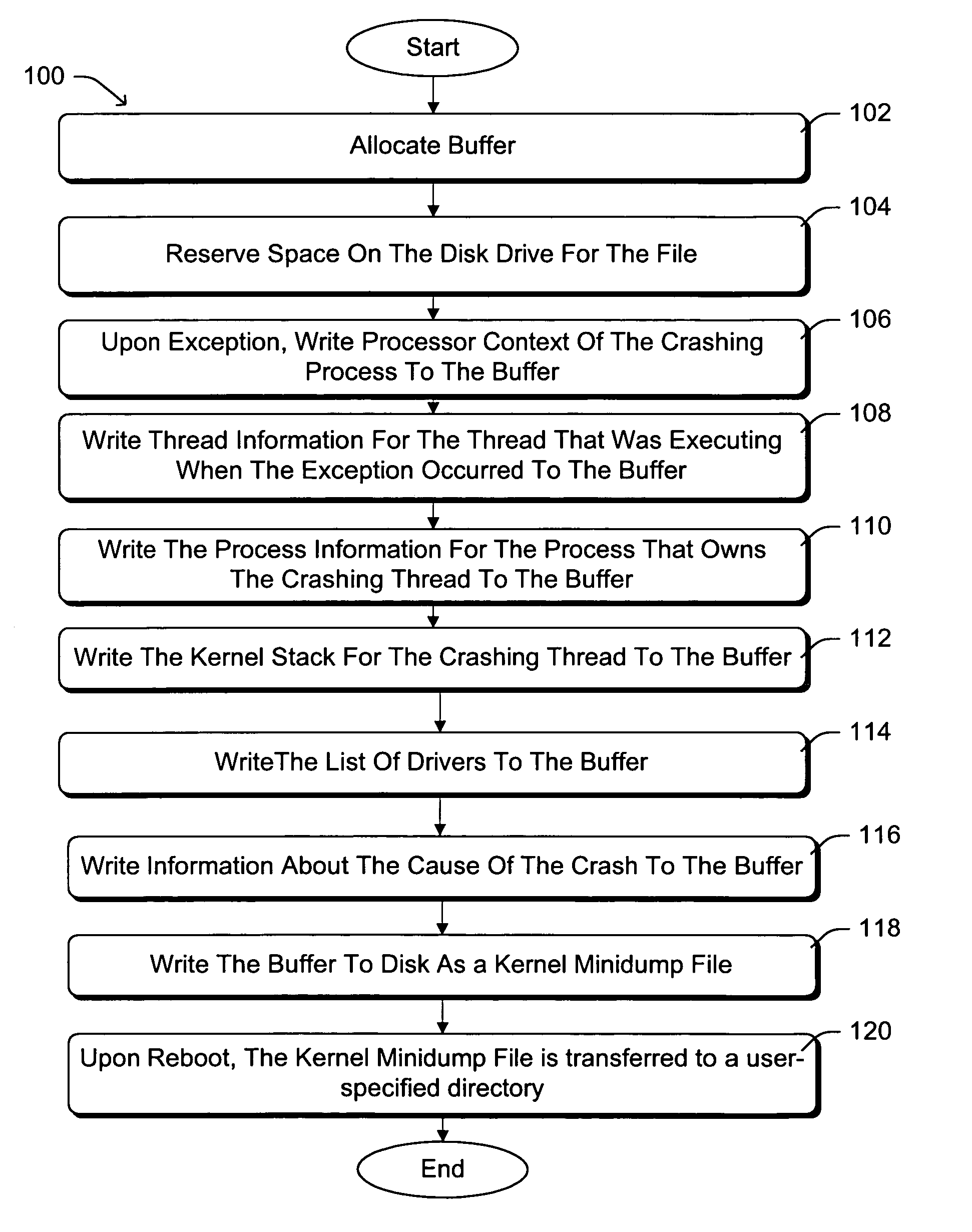Methods and arrangements for generating debugging information following software failures
a software failure and information generation technology, applied in the field of computers and software, can solve the problems of large amount of data stored in conventional methods for collecting postmortem information (or dump information), and many users simply don't have time to generate postmortem information, so as to reduce the requisite amount of data and facilitate online user support.
- Summary
- Abstract
- Description
- Claims
- Application Information
AI Technical Summary
Benefits of technology
Problems solved by technology
Method used
Image
Examples
Embodiment Construction
[0025]As shown in FIG. 1, computer 20 includes one or more processors or processing units 21, a system memory 22, and a bus 23 that couples various system components including the system memory 22 to processors 21. Bus 23 represents one or more of any of several types of bus structures, including a memory bus or memory controller, a peripheral bus, an accelerated graphics port, and a processor or local bus using any of a variety of bus architectures.
[0026]The system memory includes read only memory (ROM) 24 and random access memory (RAM) 25. A basic input / output system (BIOS) 26, containing the basic routines that help to transfer information between elements within computer 20, such as during start-up, is stored in ROM 24.
[0027]Computer 20 further includes a hard disk drive 27 for reading from and writing to a hard disk, not shown, a magnetic disk drive 28 for reading from and writing to a removable magnetic disk 29, and an optical disk drive 30 for reading from or writing to a rem...
PUM
 Login to View More
Login to View More Abstract
Description
Claims
Application Information
 Login to View More
Login to View More - R&D
- Intellectual Property
- Life Sciences
- Materials
- Tech Scout
- Unparalleled Data Quality
- Higher Quality Content
- 60% Fewer Hallucinations
Browse by: Latest US Patents, China's latest patents, Technical Efficacy Thesaurus, Application Domain, Technology Topic, Popular Technical Reports.
© 2025 PatSnap. All rights reserved.Legal|Privacy policy|Modern Slavery Act Transparency Statement|Sitemap|About US| Contact US: help@patsnap.com



